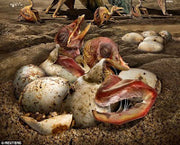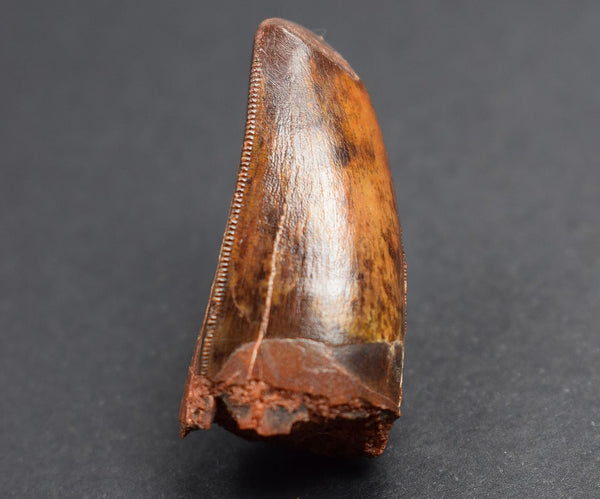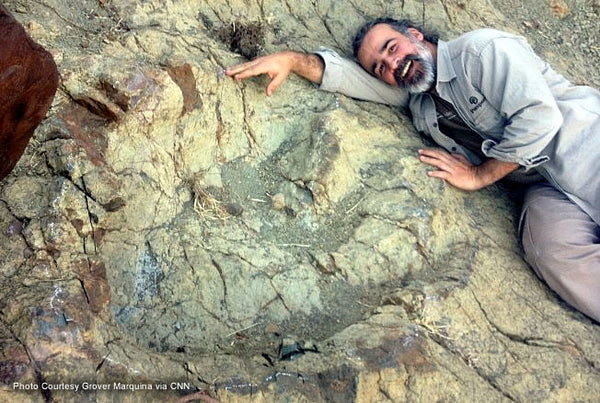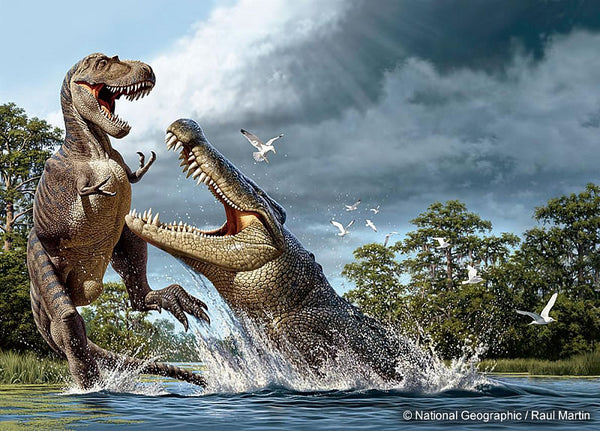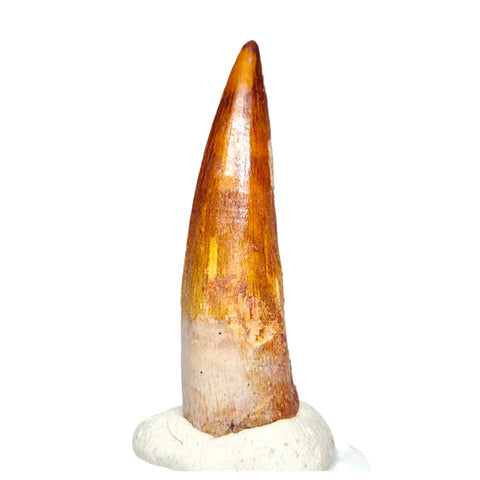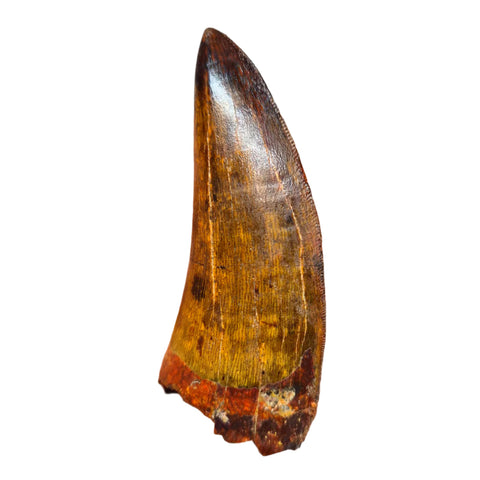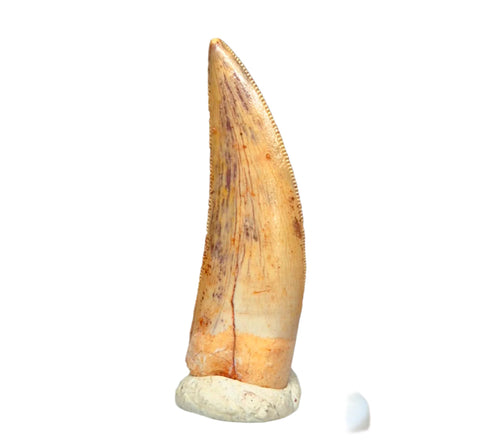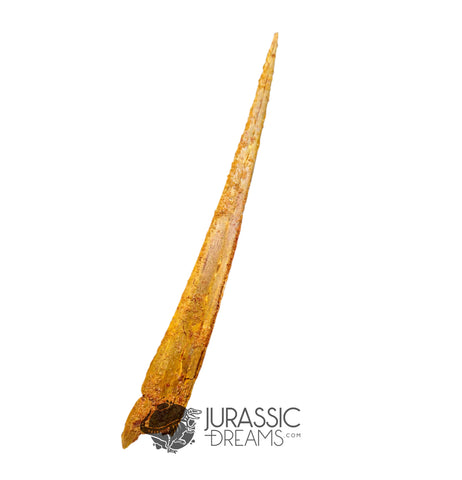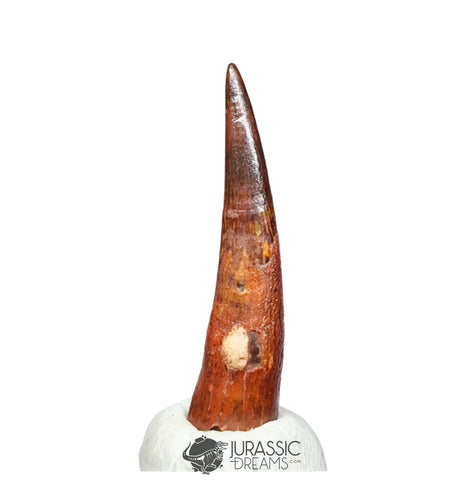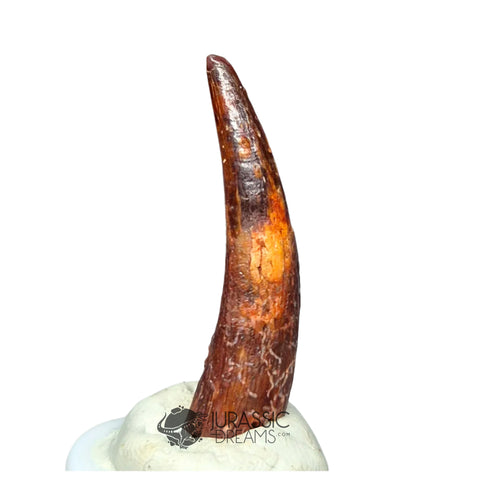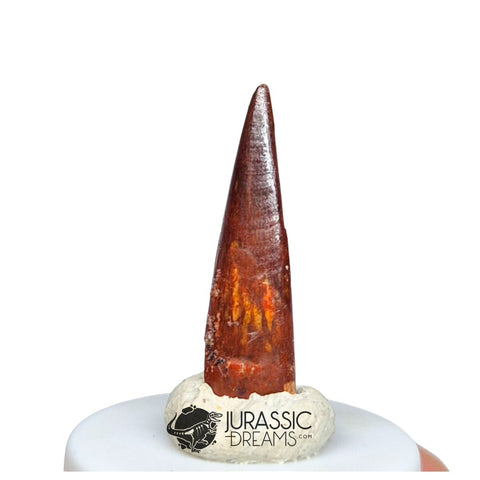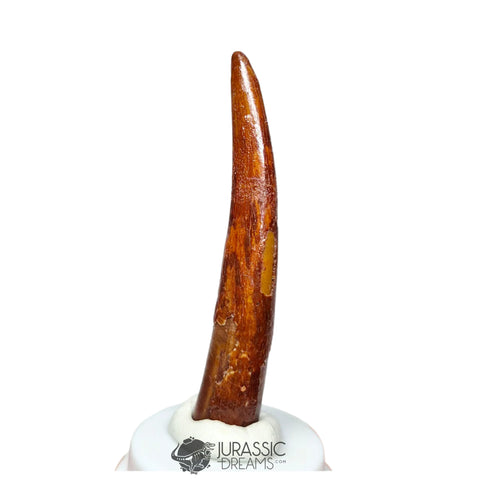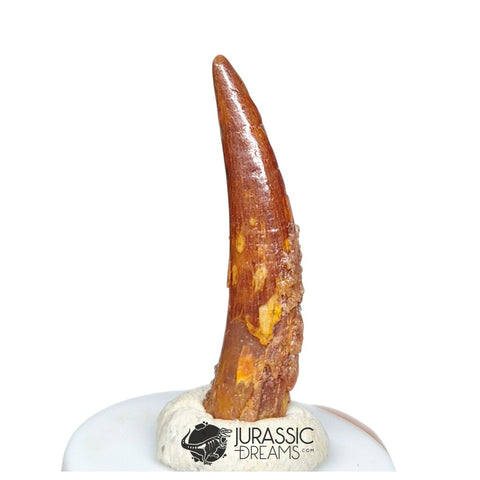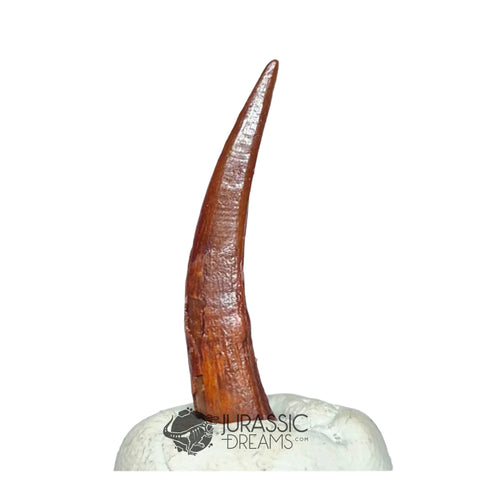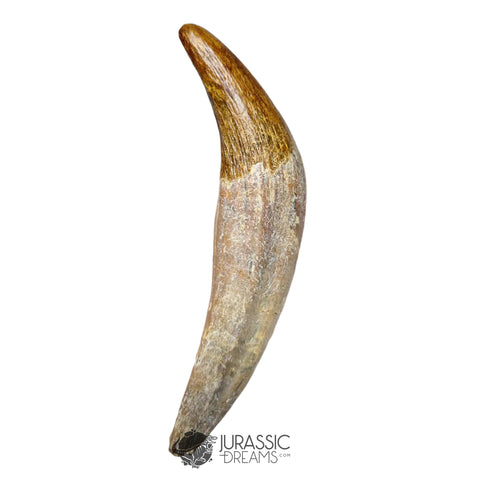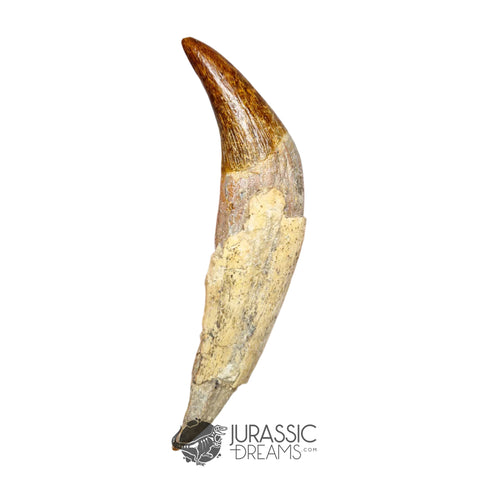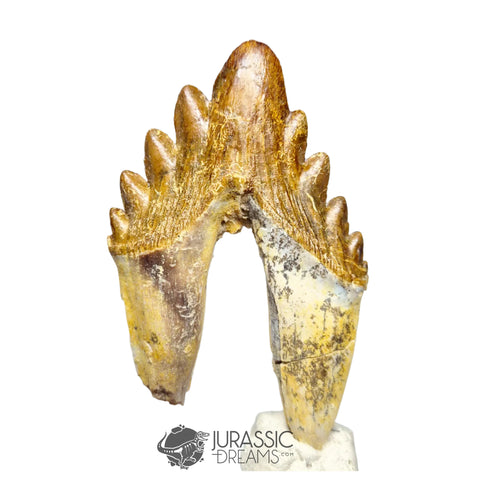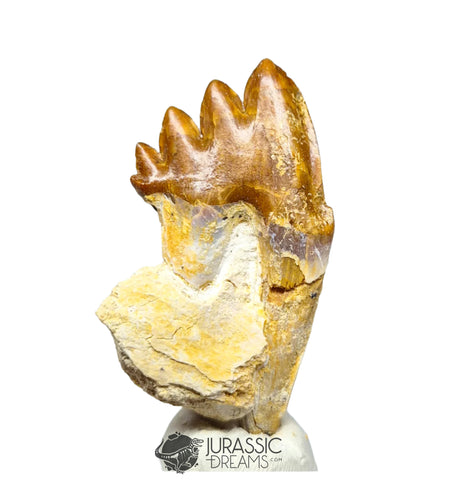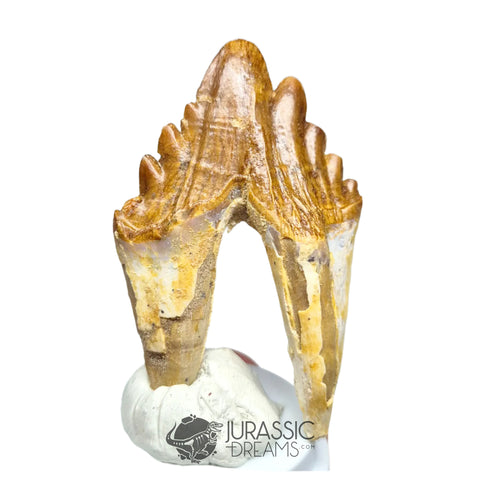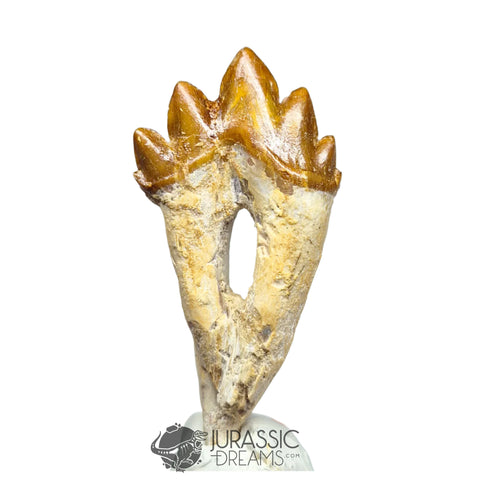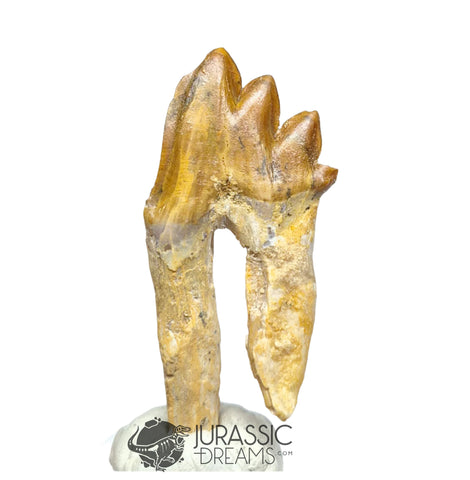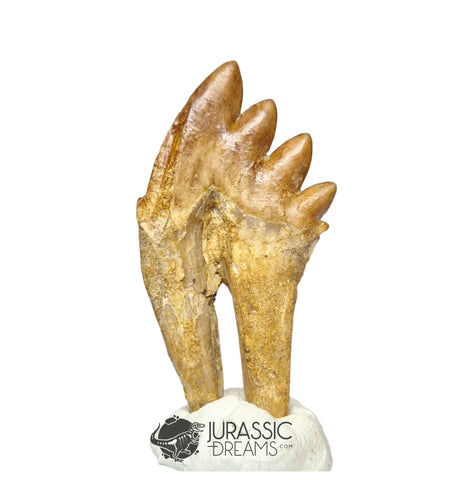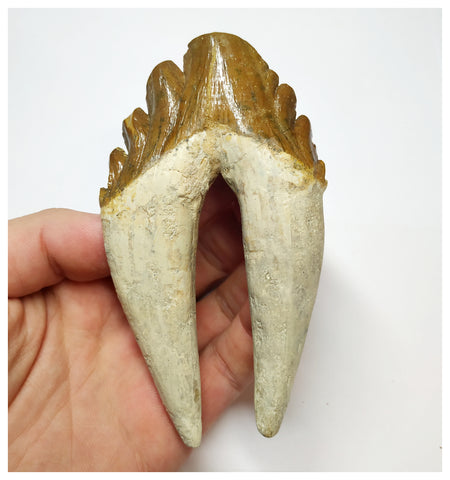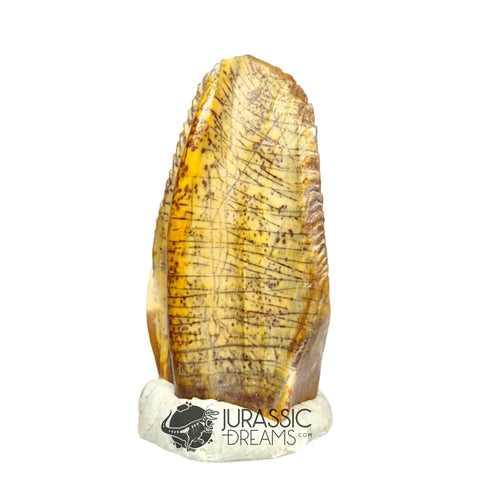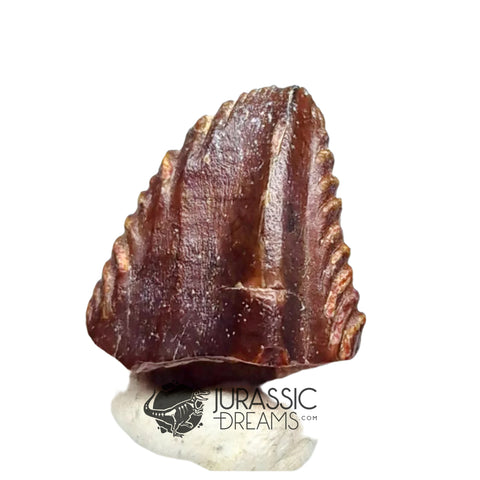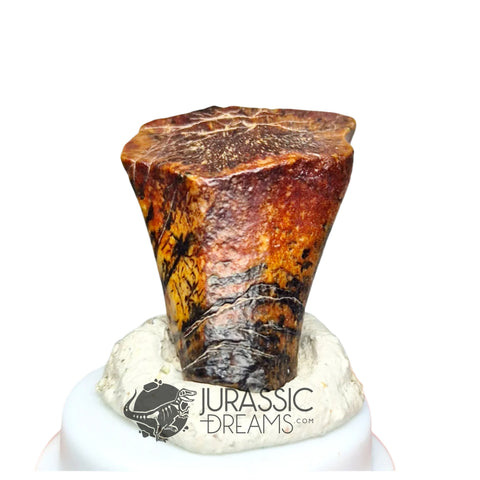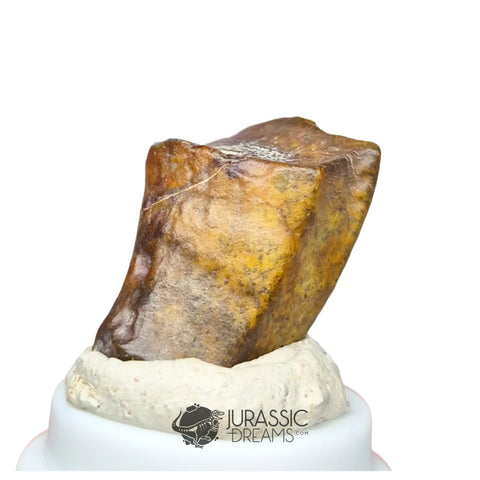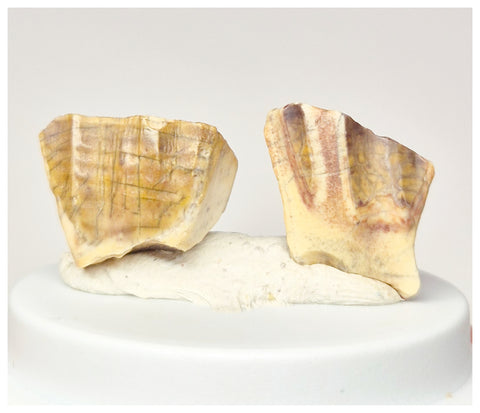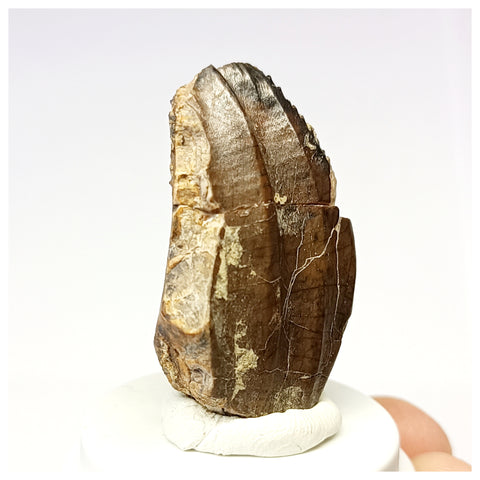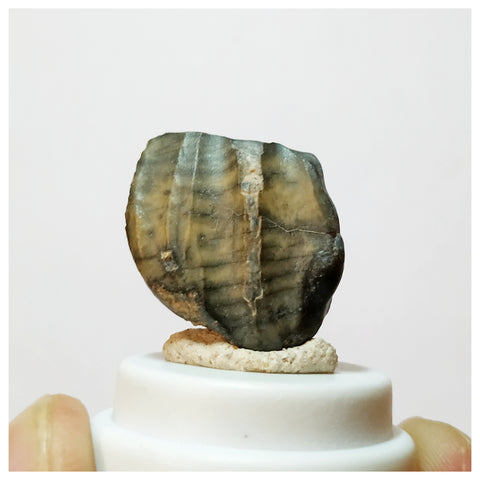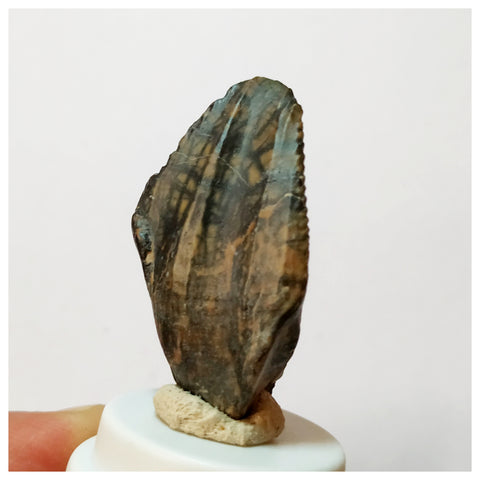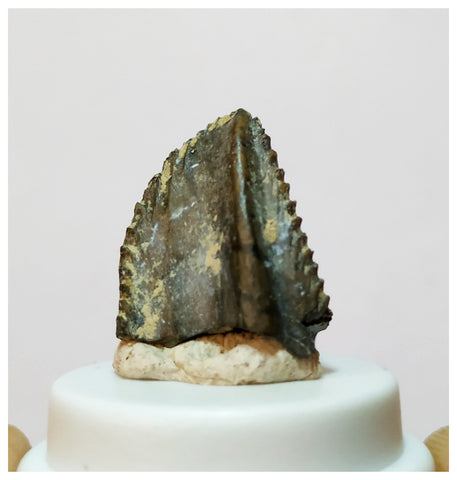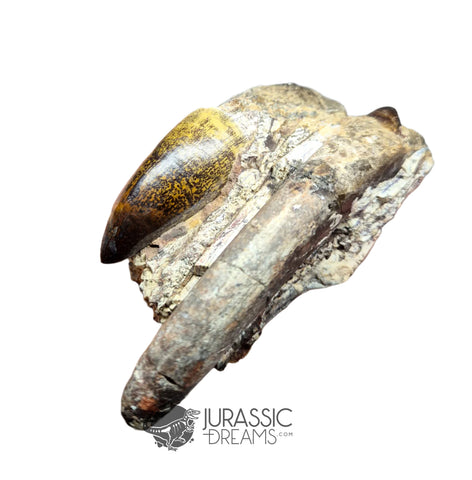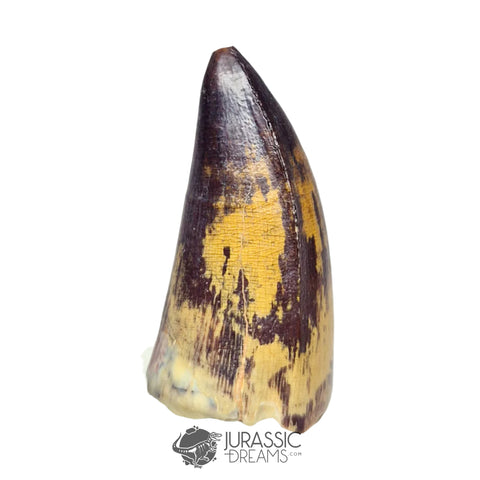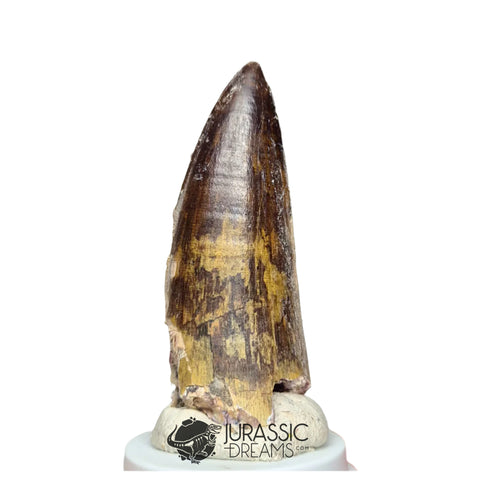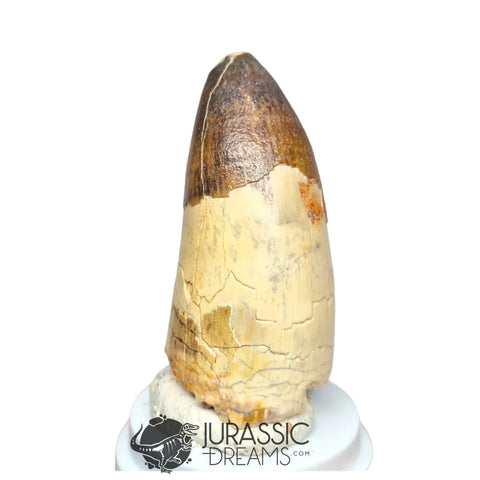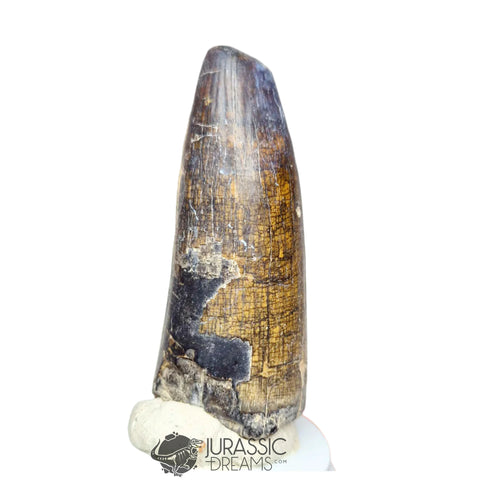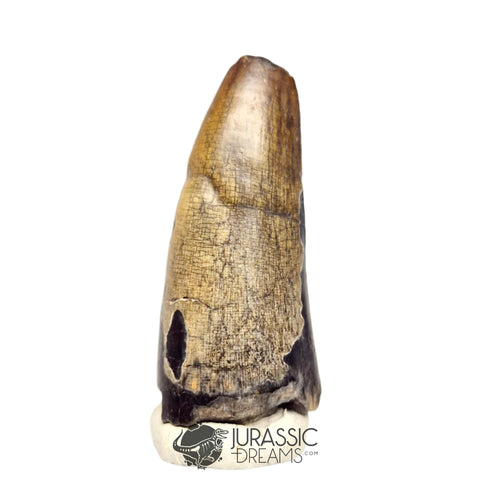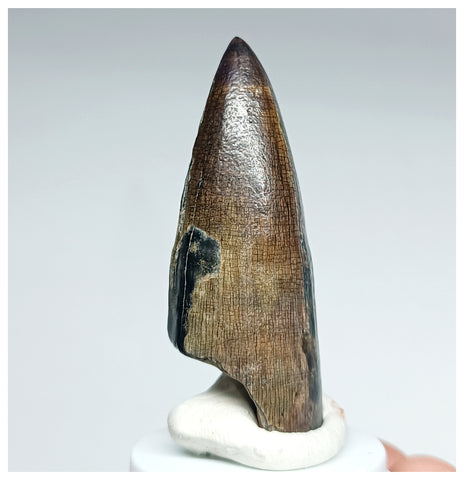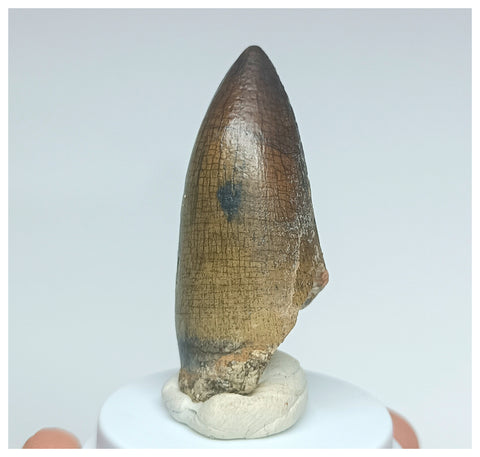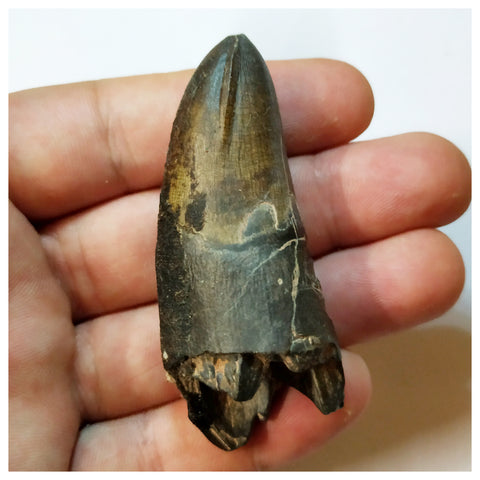Cretaceous RSS
Dinosaur Teeth With Almost Unreal Colors: Why?
Header Picture: Carcharodontosaurus saharicus tooth - © Jurassic-Dreams.com We get used to the wonderful colors of some fossils, as if they were magic, featuring a range of bright and beautiful tonalities. But it is not magic... And science has the answer. What Geological Phenomenon Creates Those Enamel Hues? There are a series of processes that occur since the animal dies until its remains come to our hands. And this is relatively easy to explain putting as example the dinosaur teeth. Biological remains may undergo alterations of their original chemical and mineralogical composition when incorporated into the fossil record. These processes continue after...
The Largest Footprint of a Carnivorous Dinosaur
The Earth shook beneath its feet and it stalked stealthily its preys near the watering holes. There, at the soft wetlands were marked its tridactyl footprints. There are not many big ichnites of the mega predators of those times, and its tracks are shy. Some of these footprints have been attributed to the Tyrannosaurus rex, due both to their size and their age. However, a new footprint discovered in Bolivia puts on the Cretaceous map a new titan 80 million years old (footprint picture in the image at the top). It lived before the Tyrannosaurus rex and it was bigger....
The Biggest Prehistoric Crocodile
Depending on who you ask, the answer is different. Unfortunately, giant prehistoric crocodiles' fossils aren't found complete, and only isolated parts of the skeleton and fragments form this puzzle. For the time being, we are sure about three species competing for the top on this peculiar ranking. Deinosuchus Depicted in the front picture, it lived 75 millions of years ago, at the end of the Cretaceous. It's important to note that actually it's not a crocodile, as it's kin to the American alligators. It has a broad, robust mouth, which allowed this species turn on itself to dismember the meat of...
Tags
-
albertosaurus
anecdote
biggest
Bolivia
brain
Camarasaurus
coelacanth
complete
concavenator
Concavenator corcovatus
corcovatus
cranium
Cretaceous
crocodile
Crocodylomorpha
cuenca
curiosities
curiosity
death roll
deinosuchus
dinosaur
dinosaur teeth
dinosaurs
discoveries
ebook
Eggs
Elasmosaur
enamel
fakes
feathers
fish
footprint
forgeries
fossil
fossil fakes
fossils
free guide
genuine fossils
Grover Marquina
guide
Hong Kong
ichnite
identify fakes
imperator
las hoyas
Latimeria chalumnae
Latimeria menadoensis
mawsonia
meteorites
mineral
Miocene
Montana
new dinosaur
New Mexico
new species
paleontologists
paleontology
pdf guide
Plesiosaur
poisonous
prehistoric
pterosaur
purussaurus
roars
sarcosuchus
show
Sinornithosaurus
Sinornithosaurus millenii
sounds
spain
Sucre
theropod
tucson
Tyrannosaurus rex
venomous
Zarafasaura oceanis
Recent Posts
- JURASSIC DREAMS will be present at the Tucson Mineral & Fossil Marketplace Jan 28 to Feb 11 - 2023

- Dinosaur Teeth With Almost Unreal Colors: Why?
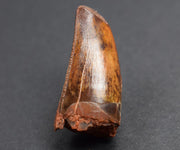
- The Largest Footprint of a Carnivorous Dinosaur
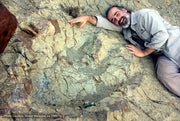
- JURASSIC DREAMS will be present at the Tucson Arizona Mineral & Fossil Show Jan-Feb 2020

- Discovered more than 200 Pterosaurian Eggs
